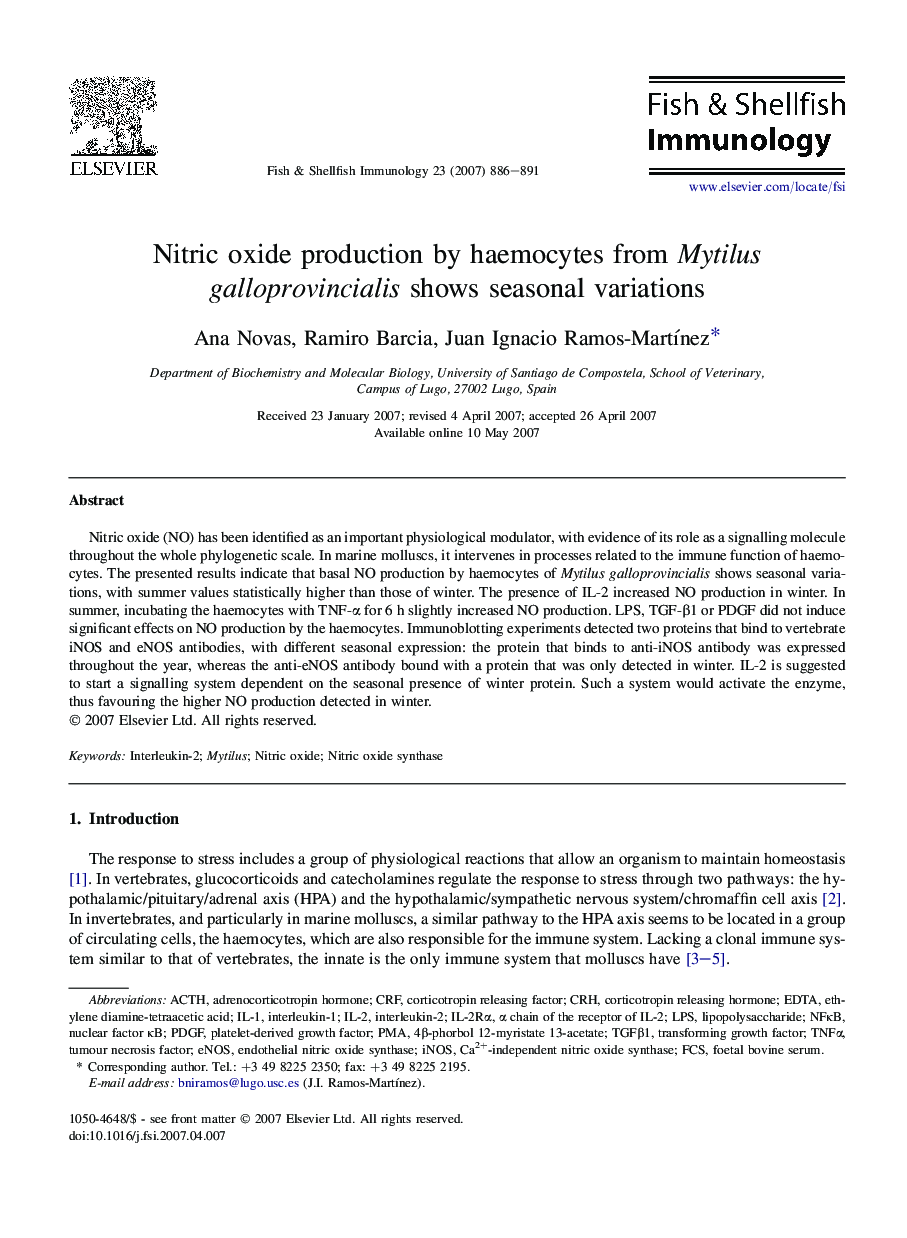| Article ID | Journal | Published Year | Pages | File Type |
|---|---|---|---|---|
| 2433557 | Fish & Shellfish Immunology | 2007 | 6 Pages |
Nitric oxide (NO) has been identified as an important physiological modulator, with evidence of its role as a signalling molecule throughout the whole phylogenetic scale. In marine molluscs, it intervenes in processes related to the immune function of haemocytes. The presented results indicate that basal NO production by haemocytes of Mytilus galloprovincialis shows seasonal variations, with summer values statistically higher than those of winter. The presence of IL-2 increased NO production in winter. In summer, incubating the haemocytes with TNF-α for 6 h slightly increased NO production. LPS, TGF-β1 or PDGF did not induce significant effects on NO production by the haemocytes. Immunoblotting experiments detected two proteins that bind to vertebrate iNOS and eNOS antibodies, with different seasonal expression: the protein that binds to anti-iNOS antibody was expressed throughout the year, whereas the anti-eNOS antibody bound with a protein that was only detected in winter. IL-2 is suggested to start a signalling system dependent on the seasonal presence of winter protein. Such a system would activate the enzyme, thus favouring the higher NO production detected in winter.
